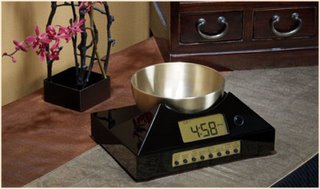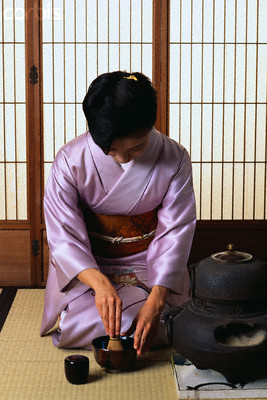...the art of the ‘tea ceremony’ inspired by Japan continued…

Zen Timepiece, a timer for the 'way of tea' ceremony
In that the Japanese tea ceremony is conventionally conducted sitting on tatami, seiza is integral to it. Unless it is the ryūrei style of tea ceremony, which employs chairs and tables, both the host and guests sit in seiza throughout.
To sit seiza-style, one first kneels on the floor, folding one’s legs underneath one’s thighs, while resting the buttocks on the heels. The ankles are turned outward as the tops of the feet are lowered so that, in a slight “V” shape, the tops of the feet are flat on the floor and big toes are overlapped, and the buttocks are finally lowered all the way down. Depending on the circumstances, the hands are folded modestly in the lap, or are placed palm down on the upper thighs with the fingers close together, or are placed on the floor next to the hips, with the knuckles rounded and touching the floor. The back is kept straight, though not unnaturally stiff. Traditionally, women sit with the knees together while men separate them slightly.

Japanese woman performing tea ceremony in seiza sitting position
Stepping into and out of seiza is mindfully performed. There are codified traditional methods of entering and exiting the sitting position depending on occasion and type of clothing worn.
All the bows (there are three basic variations, differing mainly in depth of bow and position of the hands) performed during tea ceremony originate in the seiza position.
from wikipedia.org
Posted in Japanese Inspired Zen Clocks, Meditation Timers, Meditation Tools, Now & Zen Alarm Clocks, Progressive Awakening